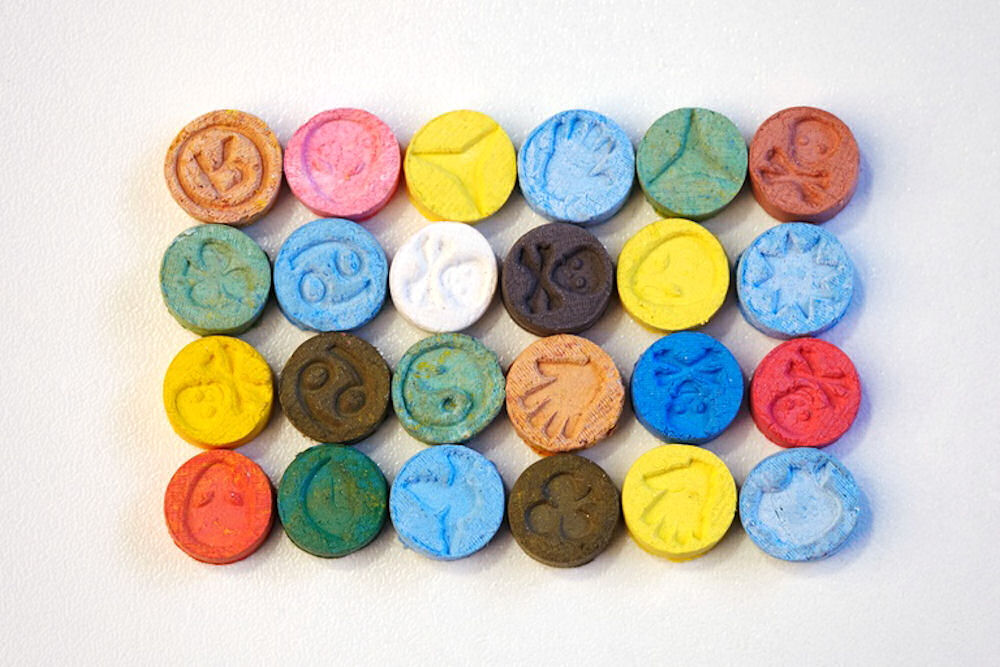Most people would think that people get into a substance abuse disorder because they needed something to sedate them heavily, or something that would give them a boost much as methamphetamines do. There are, however, some people who get into substance abuse to experience an altered state of mind, produced by chemical compounds known as hallucinogens. The experience has proven to be habit-forming for many, and those who try it to answer the question “are hallucinogens addictive?” could find themselves hooked on it before they even realize that they already were.
What are Hallucinogens?
Psychoactive drugs that can produce altered states of consciousness are called hallucinogens. This large and highly diversified class of drugs that contain alkaloid compounds produces major alterations in thought, mood, and perception. Historical accounts indicate that this particular substance has been in use since the earliest days of civilization, with tribal soothsayers and herbalists using it for a number of applications, the most common of which is to induce a trance-like state where the person on it is said to commune with the supernatural.
Hallucinogens are typically categorized into three groups:
Psychedelics
This subclass of hallucinogenic drugs induces non-ordinary mental states known as psychedelic experiences. Others describe their experience when using it as an expansion of their consciousness. Psychedelics can cause specific psychological, visual, and auditory perceptions that are not real, but to the mind of the user, these perceptions appear to be very real.
The mental state produced by psychedelics is often compared to meditative, psychodynamic, or transcendental types of altered consciousness. Psychedelics with the largest scientific and cultural influence include mescaline, lysergic acid diethylamide (LSD), psilocybin, and N, N-Dimethyltryptamine (DMT). Of all known psychedelics, LSD has long been considered the paradigmatic psychedelic compound, a standard of the substance and its effects to which all other psychedelics are often or usually compared.
The experience produced by psychedelics is often compared to an altered state of consciousness similar to that experienced during deep meditation, mystical experiences, and allegedly near-death experiences. In fact, the phenomenon of ego death is often described as a key feature of the psychedelic experience. Some of the most common psychedelics used to experience such states include:
- Ayahuasca (which contains DMT)
- San Pedro, Peyote, and Peruvian torch (which all contain mescaline)
- Psilocybe mushrooms (which contain psilocin/psilocybin)
- Tabernanthe iboga (which contains ibogaine)
Dissociatives
This subclass of hallucinogens, also known as dissos, distorts the perception of sight and sound. The most outstanding result of its use is the feeling of detachment or dissociation that it gives, specifically from either the environment or the self. There are actually many other kinds of prescription medication that could also produce feelings of detachment as well. However, dissociatives are different in that they also include hallucinogenic effects. Hallucinogenic effects are a general decrease in sensory experience, and a dream-like state or anesthesia.
Unlike psychedelics, however, dissociatives are been reported to also produce the following:
- Sedation
- Respiratory depression
- Nausea
- Disorientation
- Analgesia
- Anesthesia
- Ataxia
- Cognitive and memory impairment
- Varying degrees of amnesia.
Some dissociatives are known to possess stimulating properties, such as phencyclidine (PCP). Most of the other dissociatives are documented to have a general depressant effect on the user. Examples of dissociatives include:
- The club drug ketamine
- Dextromethorphan
- Phencyclidine (PCP/Angel dust)
Deliriants
The term for this subclass of hallucinogens was coined in the early 1980s to distinguish these drugs from psychedelics and dissociatives. The primary effect of this particular hallucinogen is causing delirium, as opposed to the more lucid and less volatile states produced by other types of hallucinogens. The effects of deliriants include:
- Stupor
- Agitation
- Confusion
- Confabulation (unconscious generation of false memory)
- Emotional bluntness
- Dysphoria (state of generalized unhappiness or dissatisfaction)
- Impaired memory
- Incoherency of thoughts
- Hypoactivity or hyperactivity
- Lucid intervals
- Akathisia (inability to remain still)
- Realistic visual hallucinations or illusions
- Regression to “phantom” behavior (disrobing, plucking, or interacting with imaginary objects)
- Delirious fevers
- Sleepwalking
- Fugue state
- Psychotic episodes
Deliriants are typically derived from plants including:
- Deadly nightshade (Atropa belladonna)
- Angel’s Trumpets (various Brugmansia species)
- Jimson weed (Datura stramonium)
- Henbane (hyoscyamus niger)
- Mandrake (mandragora officinarum)
- Nutmeg (Myristica)
Why are Hallucinogens Addictive?
 Most known hallucinogens, with the exception of PCP, are not known to alter the chemical makeup of the brain that is typically associated with the effects of most addictive substances. The real danger that comes with hallucinogenic use is that it produces psychological addiction, as the altered state of consciousness. Therefore, what it produces is said to be highly addictive to those who experience it. It should be noted that there are people who use hallucinogens who experience mostly altered perception only, such as seeing colors they normally don’t. Others, however, experience a more profound form of altered consciousness, such as those who use hallucinogens for shamanistic or ritualistic purposes.
Most known hallucinogens, with the exception of PCP, are not known to alter the chemical makeup of the brain that is typically associated with the effects of most addictive substances. The real danger that comes with hallucinogenic use is that it produces psychological addiction, as the altered state of consciousness. Therefore, what it produces is said to be highly addictive to those who experience it. It should be noted that there are people who use hallucinogens who experience mostly altered perception only, such as seeing colors they normally don’t. Others, however, experience a more profound form of altered consciousness, such as those who use hallucinogens for shamanistic or ritualistic purposes.
When used in such applications, the user is said to be able to engage in the following:
- “Tap into a higher state of consciousness” and divine specific events
- Communicate with otherworldly beings
- Acquire knowledge they normally would have no way of acquiring
For most users, however, the altered state of consciousness is usually reason enough for the chronic use of hallucinogens. It offers a glimpse into things the conscious mind would otherwise not know of.
There are also many who use plants from which hallucinogenic compounds are derived for use as mild sedatives. The sedation effect is different from that usually derived from medications as it is described as being in a “relaxed state close to euphoria”. This is particularly addictive to people who largely suffer from the negative effects of anxiety and find a measure of peace when using these hallucinogens.

What are the Dangers of Hallucinogen Addiction?
As with any form of addiction, most of the damage comes from the result of having a potentially toxic substance constantly in the body. In the case of hallucinogens, while most of the subclasses do not induce any kind of major chemical change in the brain, the action of the hallucinogen does interfere with the natural activity of the chemical signals happening in the central nervous system.
Interference with Serotonin
Serotonin is a neurotransmitter that has a complex and multifaceted biological function including modulating mood, cognition, reward, learning, and memory. It also governs numerous physiological processes such as vomiting and vasoconstriction (narrowing of blood vessels). This neurotransmitter, however, is more popularly known as being included in the group of primary signaling chemicals associated with happiness, giving them the name happy hormones.
Some of the important actions associated with serotonin include:
- Mood
- Sensory perception
- Sleep
- Hunger
- Body temperature
- Sexual behavior
- Intestinal muscle control
By disrupting the normal action of serotonin, some or even all of the actions governed by serotonin could also be adversely affected. Hallucinogens are known to disrupt the normal action of serotonin by changing its regulatory patterns.
Interference with Glutamate
Like serotonin, glutamate is also a neurotransmitter, which nerve cells use to send signals to other cells. It is known to be the most abundant excitatory neurotransmitter in the vertebrate nervous system. It is associated with every major excitatory function in the vertebrate brain, accounting in total for well over 90% of the synaptic connections. The role of glutamate is highly crucial to the brain, as it is involved in cognitive functions such as learning and memory. It is also largely associated with brain development.
Glutamate is known to regulate:
- Pain perception
- Responses to the environment
- Emotion
- Learning
- Memory
Dissociatives are known to interfere with the action of glutamate, and this disruption could adversely affect any or even all of the associated actions of the neurotransmitter. If you are struggling with hallucinogen use disorder, it’s important to seek help at our los angeles detox centers as soon as possible.
What are the Other Effects of Hallucinogens?

As hallucinogens are known to alter the perception, and to a certain extent, the consciousness of the user, the organ that is ultimately affected is the brain. Anything that directly affects the brain to such a powerful extent is potentially dangerous in that it could also alter the basic operations of the body that keeps a person healthy and alive.
Some of the known short-term effects include:
- Increased heart rate
- Nausea
- Intensified feelings
- Altered sensory experiences (such as seeing brighter colors)
- Altered sense of time (the feeling that time is passing by slowly)
- Hypertension (elevated blood pressure)
- Hyperventilation (increased breathing rate)
- Elevated core body temperature
- Loss of appetite
- Dry mouth
- Disruption of sleep patterns
- Uncoordinated movements
- Profuse sweating
- Panic attacks
- Paranoia
- Psychosis
- Disordered thinking
- Bizarre behavior
Long-term effects include:
- Persistent psychosis
- Visual disturbances
- Persistent disorganized thinking
- Sudden mood changes
A more serious adverse effect that some hallucinogen users experience is Hallucinogen Persisting Perception Disorder (HPPD). This is the recurrence of certain experiences while on hallucinogens, including persistent hallucinations or other visual disturbances. These may happen often and without warning, most often within a few days or more than a year after drug use. This effect is particularly alarming because the symptoms are sometimes mistaken for other disorders with similar manifestations, such as a stroke or a brain tumor.
What are the Other Effects of Dissociatives?
Dissociatives are known to stay in the body for several hours after being consumed. Depending upon the specific tolerance of the user, this could mean that the effect could last just as long and taper off near the end of the duration of its presence in the body. The extended feeling of detachment could become potentially hazardous because it also induces a lack of human connection with everything else. This could manifest as not caring if one’s actions are hurtful or even dangerous to others.
It could also become highly dangerous for the person as the sense of detachment from everything could also remove the person’s self-preservation instincts. This could leave them without a care if their actions are highly likely to produce self-harm.
Short-term effects of dissociatives include:
- Numbness
- Disorientation
- Loss of coordination
- Hallucinations
- Hypertension (increase in blood pressure)
- Tachycardia (elevated heart rate)
- Elevated core body temperature
- Impaired memory
- Panic
- Anxiety
- Seizures
- Psychotic episodes
- Amnesia
- Temporary paralysis
- Sudden mood swings
- Difficulty breathing
Long-term effects of dissociatives include:
- Speech problems
- Severe memory loss
- Drastic weight loss
- Persistent anxiety
- Depression
- Suicidal thoughts
Is it Possible to Overdose on Hallucinogens?
The greater danger of overconsumption of hallucinogens comes from the altered perception of the world that the user experiences while on it. It is possible for the user to not see potential dangers as they truly are, such as bridges, ledges, sharp objects, and even fire. There have been people brought to the emergency room due to consuming psychedelic mushrooms that contain psilocybin.
Dissociatives like PCP, however, does come with the possibility of a lethal overdose, as high doses of PCP have been known to induce violent seizures, slipping into a coma, and death.
What is the Treatment for Hallucinogen Addiction?

Due to the fact that there are no FDA-approved medications for hallucinogen addiction treatment, medication-assisted therapy (MAT) is not an option for hallucinogen addiction. Scientists are also doing more research to determine if behavioral therapies which can be administered through inpatient rehab or outpatient rehab, could be effective for addiction to hallucinogens.
Let Westwind Recovery® Lead You Back to Sobriety
Some of the most difficult dependencies stem from a person’s need to escape the harsh realities of the world. Not everyone is equipped with the proper coping mechanisms to deal with the stress and troubles of daily life, and this is often how they lose their way and resort to substance abuse. We know this because we have helped so many people here at Westwind Recovery® in getting back to the path of sobriety and being free of substance dependency. We could help you too. Let’s talk.

Dr. Deena is the Chief Clinical Officer of Westwind Recovery®, an award-winning outpatient treatment center in Los Angeles where she oversees the clinical and administrative program and treatment methods. Dr. Deena is a doctor of psychology and licensed clinical social worker since 1993. LCSW #20628. Originally from the East Coast, Dr. Deena has worked running treatment centers, worked as a therapist in psychiatric hospitals as well as school settings and currently has a thriving private practice in the LA area. Dr. Deena has appeared regularly on the Dr. Phil Show as an expert since 2003. She has also been featured on many other TV shows, podcasts and has contributed to written publications as well as podcasts.




